The Mike Toole Show
A Fist Tale
by Michael Toole,
Man, I am way overdue for a trip back across the Pacific to Japan. I went there in 1999, on a whirlwind tour of east Asia that also included China and South Korea. I tried my damndest not to spend my entire time in Japan at Mandarake's various outlets, with limited success. Since then, a variety of factors have conspired to prevent me from returning. There's the whole problem of airfare from the east coast, which effectively adds a $500-600 surcharge to the already-expensive flights that depart from Los Angeles or San Francisco. I've also been busy visiting other places, like Costa Rica and Norway. The World Cup arrives every four years and I'm not really willing to sit one of those out, so the global sporting event efficiently vacuums up my savings like a planned natural disaster. Finally, there's the exchange rate. When I visited, the 130 yen = 1 dollar rate was pretty splendid, but the pendulum's swung hard in the opposite direction since then.
But now the exchange rate's swinging back towards the US dollar again, so who knows what the future holds? One of my fondest memories of that trip from back when is the time my travel buddies and I filed into a ryokan, one of those little inns, in Kyoto. We'd spent the previous week hanging out in a small town outside of Hiroshima, and were winging our way back towards Tokyo. Obviously, once we were settled in, the first order of business was turning on the television. It was late morning on a weekday, but come on, this is Japan, let's watch some anime! The TV set snapped on, revealing that we were just in time for the opening sequence of Fist of the North Star 2; our collective fist pump rattled the roof shingles and set off car alarms.
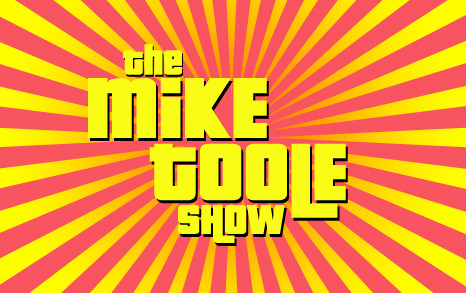
I've loved Fist of the North Star since I was a kid. It wasn't a cultural phenomenon here in the U.S. like it was (and still is) in Japan, but there were a few ways that it managed to seep into the consciousness of nerds across this happy land. My first exposure was the video game. Remember the video game? Todd does, of course. I had a similar experience to his, with the caveat that I actually owned a NES of my own. But the rest of it-- going to a buddy's house, renting the game, and insisting on playing that crappy thing all weekend-- was pretty much identical. I didn't dwell on the experience, though, because it was just a crummy game; I had no idea there was anything behind it. Until I saw this:

Granted, this happened a year or two after an eerily similar Golgo 13 comic store freakout, but just recognizing the logo was exciting as hell. The comic inside was even better, the tense, lurid tale of Kenshiro, a lone martial artist master wandering a post-nuclear hellscape, using his brutal techniques to cut down all comers. Unfortunately, I was twelve, so I couldn't really afford to collect Fist of the North Star. (Three bucks? For a comic book?!) But I did snag that one issue, and mentally filed it away for reference later.
“Later” would come in 1991, when the shiny new Streamline Pictures started rolling out the Fist of the North Star movie to theatres. I read about it in the paper, but I never made it to the few screenings that featured in Boston. Like many movie adaptations of TV anime, this film is just a reimagined digest version of the core story, so people unfamiliar with Buronson and Tetsuo Hara's sprawling, 27-volume fighting epic could still enjoy themselves. One great thing about this and other Streamline theatrical releases: going back and reading the mainstream newspaper reviews. New York Times critic Stephen Holden describes protagonist Kenshiro as a “heroic martial-arts virtuoso with magical powers,” which I suppose is fair enough. Over at the Washington Post, Richard Harrison fearlessly compares director Toyoo Ashida to Sam Peckinpah and remarks that the characters “[would] be quite at home in Sweden.” What the hell does that mean?! At any rate, going back and reading what regular movie critics thought of anime back in the day is hilarious and awesome.
That movie, by the way, is an interesting beast. You can get it on DVD, a fine edition from Discotek that features the original theatrical ending. I say “original theatrical ending” because the director, Mr. Ashida, felt like that ending wasn't quite consistent with how the characters would behave. So he altered it for home video. There are also a handful of scenes that appear in trailers and production reels, like a particularly surreal sequence involving a bad guy crushing a bystander's head, that didn't make it into the final film. Most intriguingly, much of the movie's crazily violent action sequences look all stylized and discolored-- they're kind of outrageously gory, rendered in far more detail than the comics and animation, which, after all, ran in Shonen Jump and on regular TV. But when the actual explosions of gore happen, the sharp film transfer softens, the tint goes out of control... it's weird. An Italian VHS release from years ago looks less altered, but it's still debated whether or not Toei altered the home video release of the movie, or if it just looked this way in theatres. Just check it out below-- these two screenshots are both from the DVD, just seconds apart:
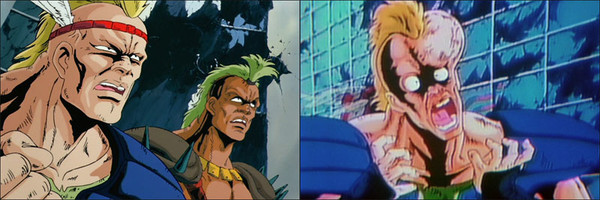
I was introduced to the Fist of the North Star TV series, a big hit for Toei in the 80s, by my pal Neil Nadelman, who was tasked with translating it by Manga Entertainment. I recall that Manga introduced some sort of weird drum n’ bass soundtrack by a guy who just happened to work at the company, a strategy that seemed to work well enough to get the first arc of the TV series on Showtime. Three things stand out to me about the show: first of all, it's pretty great. Despite dodgy, low-budget animation, it's one of those shows that, once it finds its groove (after about five or six episodes), it just gets better and better for something like a hundred episodes. The production team, wanting to mix things up, did crazy stuff for the fights, like submerging the cels in roiling water before photographing them, setting cel and background elements on fire... yeah, that kind of stuff. The second thing that sticks with me about Fist of the North Star TV? When I first watched it, it was in the company of a pal and his girlfriend, a neat-o Japanese lady. This gal fondly reminisced as we watched, because when she was eight years old, her favorite TV show in the world was Fist of the North Star. How can you argue with that? The third thing? Well, Neil had a birthday that year, so we made him a cake using an old Hulk Hogan cake pan:
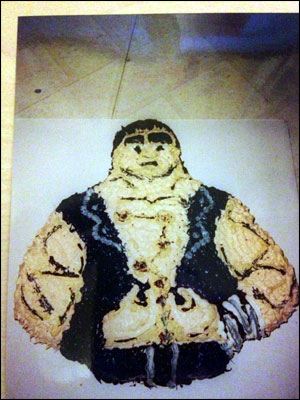
Ken's head somehow manages to be even tinier than Tetsuo Hara draws it, but you get the picture. You can really see how deep of an impression Fist of the North Star leaves on its fans, don't you? Naturally, Neil blew out his candles by mimicking Ken's 100 crack fist technique.
After Fist of the North Star came the creatively-titled Fist of the North Star 2. It has some damn cool fights and characters (my favorite is the star-spangled Ein), but it's a bloated, aimless set of episodes that doesn't do much to serve Buronson and Hara's concurrent manga storyline, which itself feels unnecessary. It's like a story that just keeps going long after the ending, you know? Kinda like the last few seasons of Burn Notice. On the upside, the series opening sequence, set to 80s glam rockers TOM☆CAT's tune “Tough Boy,” is ridiculously fun to watch. My excitement at turning the TV on in Japan and having it be the first thing I saw was totally genuine. The song still gets covered today. As for the TV series itself, you can watch the whole damn thing on Hulu. Just don't wake Kenshiro up when he's sleeping, or he'll look like this:

Fist of the North Star was hugely popular in Japan-- after the manga and anime came stuff like toys, video games, and other tie-in goodies. The franchise survived pretty well in the video game category, actually-- an assortment of games for the NES, SNES, and Genesis (some of which were weirdly altered for the international market) kept the brand going for years. We started getting new Fist of the North Star media in the mid-90s, starting with, of all things, a Saturn/Playstation game. Despite being a run of the mill graphical adventure, the game featured a brand new story by the principals Hara and Buronson, and the return of the original anime voice cast. As the decade drew to a close, Buronson and Hara even turned out a Fist of the North Star illustrated novel.

That novel was adapated into New Fist of the North Star, a perfectly enjoyable but 100% superfluous 2003 OVA series. This is actually the problem with a lot of newer Fist of the North Star stuff-- since the original story is so sprawling and well-defined, it's almost impossible to make new stories with lasting consequences. One item of note: after the great Akira Kamiya established and held the voice role of Kenshiro for years, this OVA series began a parade of new actors as the invincible master of Hokuto Shinken, starting with Takehito Koyasu. ADV Films released this on DVD; irritatingly, it's letterboxed. Honestly, who releases widescreen stuff letterboxed anymore?!
When I first heard about it, I loved the idea of Fist of the Blue Sky, a true prequel to the franchise by the artist Tetsuo Hara, with script supervision by Buronson. Hara's idea is simple: what if you took the original's reality-defying martial arts and put them in a period piece instead of a post-apocalyptic tale? Here, we go to 1930s Shanghai, where the city is prowled by fearsome vigilante named Yan Wang, a.k.a. Kenshiro Kasumi, the original comic hero's uncle. But the actual manga, which had a few volumes released in English via the ill-fated Raijin Comics, never really captured my imagination. There's also a 26-episode anime, but the character designs for it are awful, and the animation amounts to a series of fairly good still shots linked together by terrible animation.
One of the marks of a great story is when you really dig the villain-- maybe they're decent but misguided, or maybe they've got this odd sense of honor, and they start to feel like a second protagonist. Fist of the North Star's final boss, Raoh, has got this going on-- he's steely and ruthless and determined to conquer, but he's got a plan for the world, dammit. It's only natural that he eventually got his own TV series, Legend of the Dark King, which depicts key moments in his rise to power (the best bits are the ones with his ridiculously tough horse). It's undermined a bit by its cheap-o digital TV animation, but it's still an interesting look at one of anime's great villains. Anyone want to speculate on when he stopped dyeing his hair blond?
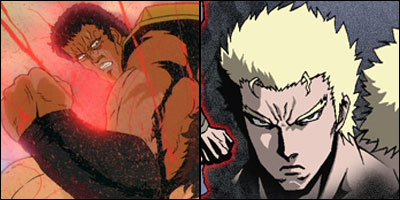
The ultimate reason I'm visiting Fist of the North Star-land this week is because, in that ryokan in ‘99, I settled in to watch Fist of the North Star on TV. Just this evening, I once again settled in to watch the show-- only this verion's called DD Fist of the North Star. Here, we really witness Fist of the North Star's true cultural reach, because this show takes the grim, violent, post-apocalyptic martial arts epic and turns it into The Simpsons. The show's central characters-- Kenshiro, and his brothers in martial arts Raoh and Toki-- come to Tokyo to work at a convenience store. The store's proprietor, Ryuken (voiced by Akira Kamiya, of course) proceeds to give them an increasingly outlandish set of tasks in order to win employment at the shop. Raoh is ruthless. Kenshiro is stoic to a fault. Toki is kindly and tends to die suddenly. It's all kind of hard to follow if you're not at least a bit familiar with the source material. But it's got me wandering the halls of my house, mumbling “hidebu” to myself.
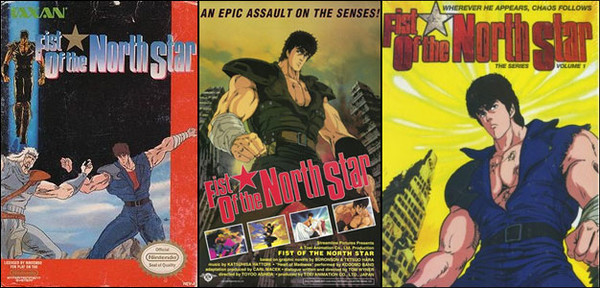
There's something about that logo that still intrigues me, man. It's kinda stylish, in a very 80s way, though it's artistically totally different from the original Hokuto no Ken logo. I'm curious about just how transitive it was, though-- across Taxan's video game, Viz's comics, Streamline's theatrical and VHS release, and Manga Entertainment's TV show release, the logo's the same. Was it a Toei thing? When did they start using it? (I've got an English script from Toei dated 1986. It translates “Hokuto no Ken” as “KEN THE GREAT BEAR FIST,” not Fist of the North Star.) And if it was a Toei deal, why'd they stop having their licensors use it? It's cool!
Even though Fist of the North Star hasn't made as much of an impression here in the west (although it did show up, sort of, on American Idol of all places), we're fortunate enough to have easy access to the movie (you can even watch the awful live-action film on Netflix!), the TV series, and the current Dynasty Warriors clone console games. The one missing piece? A pretty good set of films and OVAs courtesy of TMS from a few years back. I'd implore Discotek to pick ‘em up, but they've got a full plate these days. We'll have to be patient, just like Kenshiro.
So who's your favorite non-Kenshiro Fist of the North Star character? Is it those lovable scamps, Bat and Lin? Is it Zeede, the prototypical mohawked punk who gets killed immediately but is still beloved by fans of the franchise? Is it the fat guy?! Let me know in the comments! Til then, I'll leave you with these cameos from the movie:
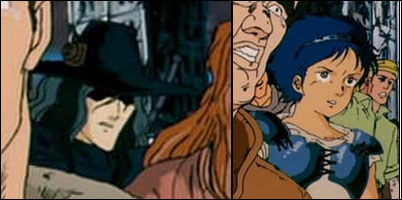
discuss this in the forum (18 posts) |